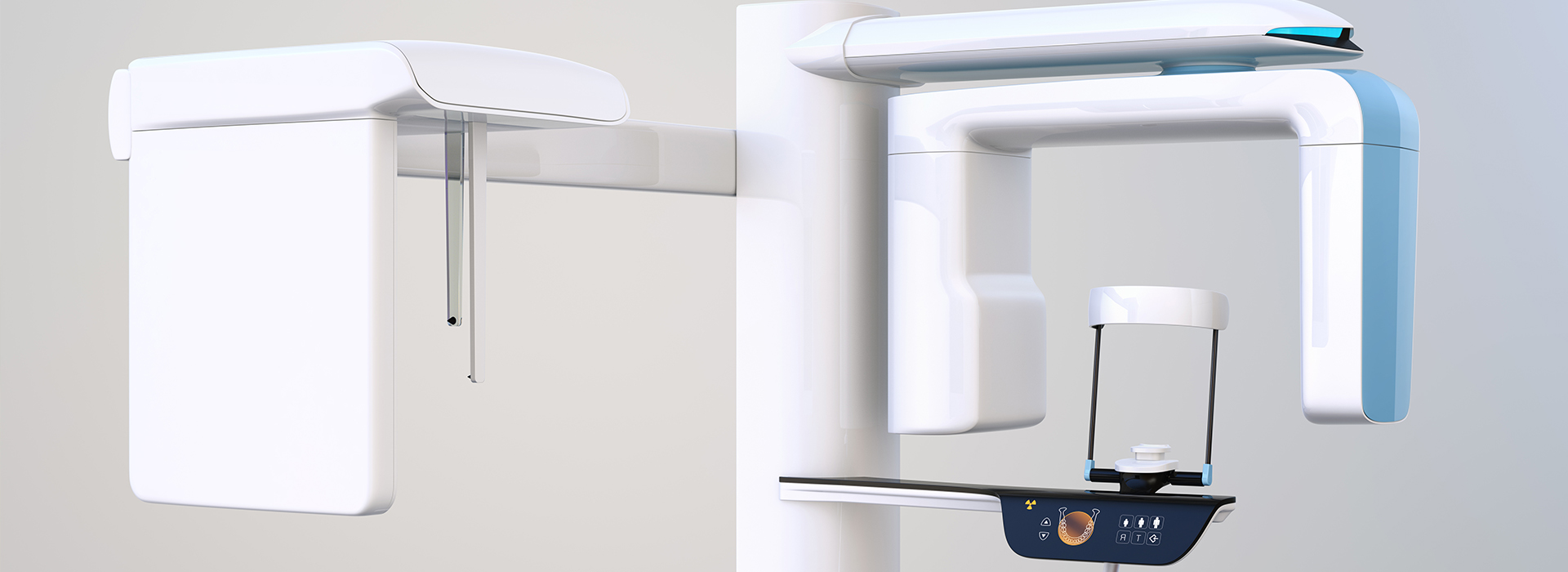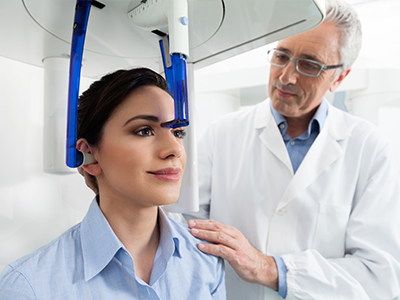At the office of Cruzin' Dental, we invest in advanced diagnostic tools so your treatment starts with the clearest possible information. Cone-beam computed tomography (CBCT) captures high-resolution, three-dimensional images of teeth, jaws, and surrounding structures that traditional two-dimensional X-rays cannot show. This fuller view helps clinicians identify issues earlier and plan care with greater confidence while keeping the patient’s comfort and safety in mind.
Our CBCT system is selected for its combination of image clarity and efficient scanning, allowing us to obtain targeted 3D data quickly and with carefully controlled radiation exposure. When used appropriately, CBCT offers a practical balance between diagnostic value and patient safety, supporting better outcomes across a range of dental procedures.
What a 3D scan reveals that 2D X-rays can’t
Traditional dental X-rays provide useful cross-sections, but they flatten complex anatomy into a single plane. CBCT acquires a volumetric dataset, which can be rotated and examined from multiple angles to reveal root configurations, sinus relationships, bone contours, and hidden pathology. This three-dimensional perspective is especially helpful when anatomy is atypical or when adjacent structures could influence treatment decisions.
The level of detail in CBCT images makes it easier to detect issues such as small fractures, impacted or ectopic teeth, and the course of nerve canals that might be obscured on standard films. Rather than relying on inference, clinicians can see spatial relationships directly and measure dimensions with confidence.
Beyond detection, these 3D scans serve as an objective record of anatomy before treatment. That baseline helps clinicians track changes over time, confirm surgical access and margins, and communicate findings more clearly with patients and laboratory partners when complex restorative work is planned.
How CBCT enhances treatment planning and surgical precision
CBCT plays a central role in preoperative planning because it supplies depth information critical to safe, predictable procedures. For implant placement, the scan allows the dental team to assess bone volume, density, and the orientation of available bone in three dimensions, enabling precise selection of implant position and angle without guesswork.
When planning oral surgery, endodontic procedures, or orthodontic interventions, clinicians use CBCT to visualize the exact relationship between surgical sites and nearby anatomy — such as nerve pathways and sinus cavities — reducing the risk of unintended complications. This level of planning can shorten operative time and improve procedural outcomes.
Many practices integrate CBCT datasets with digital workflows, creating surgical guides and digitally guided restorations that translate the plan to the chairside. The result is a coordinated approach where clinical intent, imaging, and treatment execution align closely, which supports consistent results and a smoother patient experience.
Everyday dental uses where CBCT adds value
CBCT has a wide range of practical applications across general and specialty dental care. It is commonly used for implant assessment, complex tooth extractions, evaluation of temporomandibular joint (TMJ) conditions, and the diagnosis of cysts or lesions in the jaws. In endodontics, three-dimensional imaging can reveal root anatomy, accessory canals, and the extent of periapical disease more reliably than 2D films.
For patients with trauma or facial injuries, CBCT helps clinicians assess fractures, tooth displacement, and soft tissue relationships. Orthodontists also use CBCT to study jaw growth patterns, airway spaces, and tooth positions when planning treatments that require a precise understanding of skeletal and dental relationships.
Because CBCT can provide targeted views without requiring multiple exposures, it often reduces the need for additional imaging studies once a definitive scan has been taken. That efficiency supports clearer diagnoses and faster progression from evaluation to treatment.
What to expect during a CBCT appointment: safety and comfort
A CBCT scan is noninvasive and typically completed in a single, short appointment. The patient either stands or sits while the scanner rotates around the head, acquiring a volumetric image in a matter of seconds. Positioning is straightforward and designed to be comfortable for most patients, including those who may have difficulty with lengthy procedures.
Radiation exposure from CBCT varies with the size of the scanned area and the machine settings, and practitioners select protocols that focus only on the region needed for diagnosis. Modern devices and appropriate scanning parameters are used to minimize exposure while still providing clinically useful images. Our team follows accepted safety guidelines and tailors imaging choices to each patient’s needs.
If you have concerns about radiation, pregnancy, or a history of frequent imaging, our team will discuss alternatives and explain why a CBCT scan is — or isn’t — recommended in a particular case. Clear communication about risks and benefits is part of the informed care process we follow for every patient.
Combining CBCT with digital dentistry for coordinated care
CBCT integrates seamlessly with many digital dental technologies. When merged with intraoral scans or digital impressions, a CBCT dataset becomes a versatile planning tool that supports guided surgery, custom abutments, and laboratory-fabricated restorations. This interoperability helps reduce remakes and align clinical and laboratory workflows.
Digital planning based on CBCT can also improve interdisciplinary collaboration. Specialists, general dentists, and dental laboratories can review the same 3D information remotely and make decisions together, which keeps treatment consistent and transparent for patients undergoing multi-step procedures.
As digital tools continue to evolve, CBCT remains a cornerstone technology for practices committed to evidence-based, predictable care. Used thoughtfully, it enhances diagnostic accuracy and strengthens the connection between planning and clinical results.
In summary, CBCT offers a three-dimensional window into oral anatomy that improves diagnosis, planning, and the safety of many dental procedures. If you’d like to learn more about how CBCT is used in our office or whether it may be recommended for your care, please contact Cruzin' Dental for more information.




